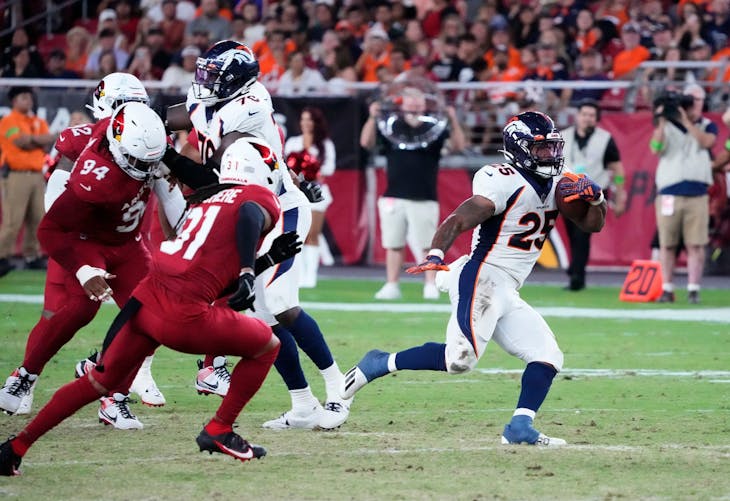
When addressing problems on your dynasty roster, the solutions should be proportional to the problem. At the running back position, there can be three levels of solutions: quarter measures, half measures, and full measures. The high-risk nature of the running back position makes smaller measures a better approach than paying up to fix the position.
Running Back Overview
Dynasty fantasy football is a long-term game played in weekly installments. Some positions, like quarterback and wide receiver, should be built with the long-term aim in mind. However, the nature of the running back position makes the week-to-week solution an option more so than other positions.
When an injury occurs at the running back position, and a starting running back misses a week, he is typically replaced by a backup running back who sees the vast majority of the startering opportunities.
Related: See similar articles at Wide Receiver and Tight End
Samaje Perine provided a great case study in 2022. Through week 10, he did not have a single game with double-digit carries and had of 11 touches in a Week 3 blowout of the Jets.
During the first 10 weeks of the season, Perine played in nine games (Cincinnati had a week 10 bye) and averaged only 5.5 points per game. During that five weeks, he ranked 63 in points per game among running backs.
In Week 11, Joe Mixon was injured, and Perine had 15 touches and 82 total yards in relief of Mixon. The following week, Perine started against Tennessee and had 21 touches for 93 yards and a touchdown. He started again in Week 13 and produced 106 rushing yards and 49 receiving yards on 27 total touches.
During the two-game stretch, Perine averaged 20.4 points per game and was the RB3.
There was a simple bimodality to Perine’s season: when Mixon played, he sat on fantasy benches, and when Mixon did not play, he was a major difference maker.
Perine is a good example of how to solve running back issues. Your solution is not to find a starter to slot into your lineup for the entire regular season. Instead, you are trying to improve a series of 14 weeks, where you need to get solved by a lineup set each week.
This is critically different than the quarterback position. Your team can survive a week or two starting a spot starter at quarterback, but if you must depend on it for the season, you likely are going to struggle. You won’t struggle at running back; instead, you will prosper.
Small Measures
When employing small measures at the running back position, think about how you will set your roster up to solve the position one week at a time throughout the season. Your small measures require optimizing your roster and your roster construction.
1. Optimize your roster
Fixing the running back position can be done cheaper than almost any other position. This can simply be done by working through your running back position and cutting any players you think are not in an optimized spot.
Do you have a running back on your roster who you do not think is a clear injury away from a spot start while there is such a player available on your waiver wire? Cut your player and add the clear injury-away player. This is a process to go through during each weekly waiver run so that your bench is consistently optimized for injury-away players.
Continue reading this content with a ELITE subscription.
An ELITE subscription is required to access content for Dynasty leagues. If this league is not a Dynasty league, you can edit your leagues here.

_png)